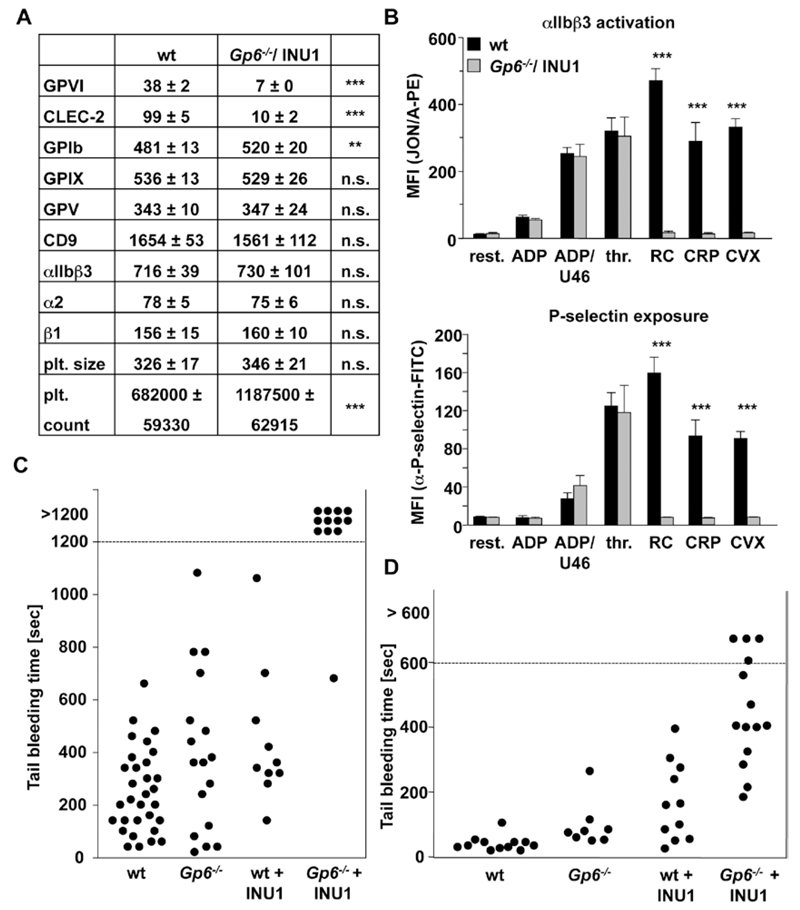Figure 3.
Analysis of Glycoprotein VI (Gp6−/−)/C-type lectin-like receptor 2 (CLEC-2)–depleted mice. A, Flow cytometric analysis of surface protein expression of Gp6−/− platelets 5 days post injection with the anti–CLEC-2 antibody INU1. Platelets were stained for 15 minutes at room temperature with the indicated fluorophore-labeled antibodies and directly analyzed. Platelet count in number of platelets/µL. Platelet size is given as mean forward scatter (FSC) and was determined by FSC characteristics. Results are mean fluorescence intensities (MFI)±SD (n=5, representative of at least 3 independent measurements). **P<0.01; ***P<0.001. B, Flow cytometric analysis of degranulation-dependent P-selectin exposure and integrin αIIbβ3 activation on platelets. Washed blood was incubated with the indicated agonists for 15 minutes at room temperature and analyzed on a FACSCalibur. Results are mean±SD (n=5 mice per group, representative of 3 individual experiments). ***P<0.001. ADP: 10 µmol/L; U46619: 3 µmol/L; thrombin (thr): 0.01 U/mL; rhodocytin (RC): 1 µg/mL; collagen-related peptide (CRP): 10 µg/mL; convulxin (CVX): 1 µg/mL. C, A 1-mm segment of the tail tip was cut, and bleeding was determined to have ceased when no blood drop was observed on the filter paper. Each symbol represents 1 individual. Differences of bleeding times among control, Gp6−/− mice, and CLEC-2–-depleted mice are nonsignificant. D, An 1-mm segment of the tail tip was cut, and the tail tip was immersed in saline. Each symbol represents 1 individual. All experiments were performed on day 5 to 6 after antibody injection. Bleeding time of Gp6−/−/CLEC-2–depleted mice is significantly prolonged compared with control and Gp6−/− mice ***P<0.001, and to CLEC-2–depleted mice **P<0.01. Bleeding time of CLEC-2–depleted mice is prolonged compared with control **P<0.01. WT indicates wild-type mice.

